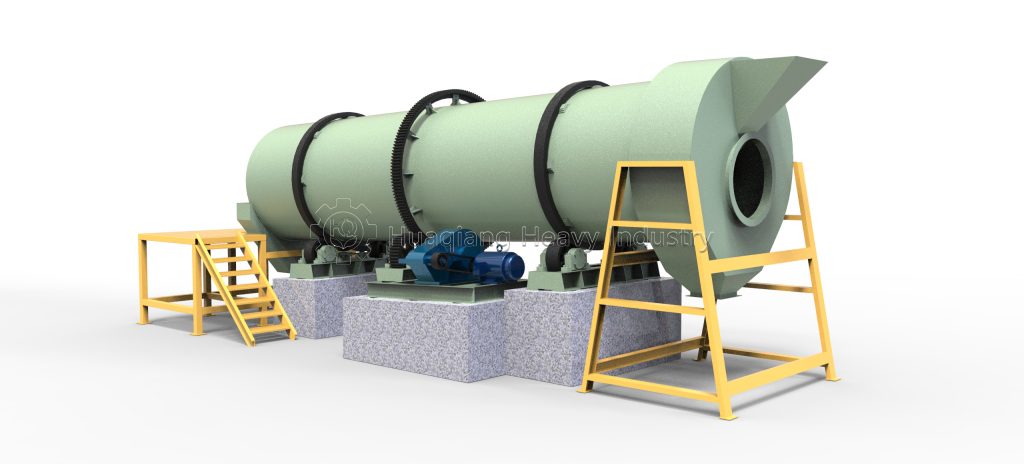How does a drum granulator support large-scale fertilizer production?
In large-scale fertilizer production bases, a drum granulator is a tireless “production workhorse”—its cylindrical drum rotates continuously, processing dozens of tons of raw materials daily, easily meeting the demands of large-scale production. Paired with a suite of efficient supporting equipment, it ensures efficient operation of the entire fertilizer production process, from raw materials to finished product, making it the preferred equipment for many companies expanding production.

The drum granulator’s core strength lies in its adaptability to large-scale production. After the mixed powdered raw materials (whether high-concentration compound fertilizer or bio-organic fertilizer) enter the inclined drum, the drum continuously rotates.Driven by internal baffles, the raw materials are continuously tumbled and mixed, while a spray system adds an appropriate amount of water or binder, gradually agglomerating them into uniform granules. Its advantages are significant: a large processing capacity, with a single unit capable of granulating 3-10 tons of granules per hour, meeting the continuous production needs of large-scale factories. The granules are strong, and the thorough tumbling and compaction by the drum makes them resistant to breakage, facilitating long-distance transportation. Furthermore, it is highly adaptable to the raw materials, capable of stable granulation of materials ranging from mineral powder to organic humus.
However, large-scale fertilizer production is never a “single battle” for the rotary drum granulator. During raw material pretreatment, a cage crusher can break up lumps, while a vibration screener machine can pre-screen impurities.To ensure the purity of raw materials, electronic belt scales accurately control the delivery rate of each raw material during the batching process, with an error of no more than 1%, ensuring the accuracy of the fertilizer formula. After granulation, a rotary dryer uses hot air to quickly reduce the moisture content of the granules, and a cooler cools the high-temperature granules to room temperature. Finally, the finished product screen is used for grading to ensure uniform granule size before delivery. These devices are seamlessly integrated with the rotary drum granulator to form an efficient production line.
